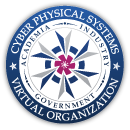Deng, Zijie, Feng, Guocong, Huang, Qingshui, Zou, Hong, Zhang, Jiafa.
2022.
Research on Enterprise Information Security Risk Assessment System Based on Bayesian Neural Network. 2022 IEEE 2nd International Conference on Data Science and Computer Application (ICDSCA). :938–941.
Information security construction is a social issue, and the most urgent task is to do an excellent job in information risk assessment. The bayesian neural network currently plays a vital role in enterprise information security risk assessment, which overcomes the subjective defects of traditional assessment results and operates efficiently. The risk quantification method based on fuzzy theory and Bayesian regularization BP neural network mainly uses fuzzy theory to process the original data and uses the processed data as the input value of the neural network, which can effectively reduce the ambiguity of language description. At the same time, special neural network training is carried out for the confusion that the neural network is easy to fall into the optimal local problem. Finally, the risk is verified and quantified through experimental simulation. This paper mainly discusses the problem of enterprise information security risk assessment based on a Bayesian neural network, hoping to provide strong technical support for enterprises and organizations to carry out risk rectification plans. Therefore, the above method provides a new information security risk assessment idea.
Dutta, Ashutosh, Hammad, Eman, Enright, Michael, Behmann, Fawzi, Chorti, Arsenia, Cheema, Ahmad, Kadio, Kassi, Urbina-Pineda, Julia, Alam, Khaled, Limam, Ahmed et al..
2022.
Security and Privacy. 2022 IEEE Future Networks World Forum (FNWF). :1–71.
The digital transformation brought on by 5G is redefining current models of end-to-end (E2E) connectivity and service reliability to include security-by-design principles necessary to enable 5G to achieve its promise. 5G trustworthiness highlights the importance of embedding security capabilities from the very beginning while the 5G architecture is being defined and standardized. Security requirements need to overlay and permeate through the different layers of 5G systems (physical, network, and application) as well as different parts of an E2E 5G architecture within a risk-management framework that takes into account the evolving security-threats landscape. 5G presents a typical use-case of wireless communication and computer networking convergence, where 5G fundamental building blocks include components such as Software Defined Networks (SDN), Network Functions Virtualization (NFV) and the edge cloud. This convergence extends many of the security challenges and opportunities applicable to SDN/NFV and cloud to 5G networks. Thus, 5G security needs to consider additional security requirements (compared to previous generations) such as SDN controller security, hypervisor security, orchestrator security, cloud security, edge security, etc. At the same time, 5G networks offer security improvement opportunities that should be considered. Here, 5G architectural flexibility, programmability and complexity can be harnessed to improve resilience and reliability. The working group scope fundamentally addresses the following: •5G security considerations need to overlay and permeate through the different layers of the 5G systems (physical, network, and application) as well as different parts of an E2E 5G architecture including a risk management framework that takes into account the evolving security threats landscape. •5G exemplifies a use-case of heterogeneous access and computer networking convergence, which extends a unique set of security challenges and opportunities (e.g., related to SDN/NFV and edge cloud, etc.) to 5G networks. Similarly, 5G networks by design offer potential security benefits and opportunities through harnessing the architecture flexibility, programmability and complexity to improve its resilience and reliability. •The IEEE FNI security WG's roadmap framework follows a taxonomic structure, differentiating the 5G functional pillars and corresponding cybersecurity risks. As part of cross collaboration, the security working group will also look into the security issues associated with other roadmap working groups within the IEEE Future Network Initiative.
ISSN: 2770-7679



